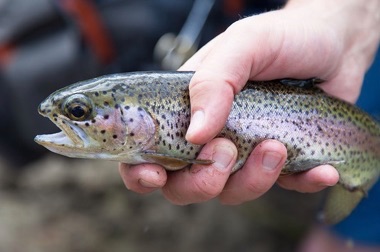Campus News
New meta-analysis reveals pace and extent of river recovery
A new global meta-analysis by UC Santa Cruz researchers reveals patterns of river responsiveness to disturbances such as oil spills, wastewater contamination, and fires.

Conservation biologists are challenged to predict the pace and extent of river recovery following disturbances such as oil spills, wastewater contamination, and fires. A new global meta-analysis by researchers at the University of California, Santa Cruz, reveals patterns of responsiveness in these highly valued ecosystems.
Based on studies of 50 incidents worldwide that affected river or stream water quality, the analysis found that streams improved but did not fully recover within the study period. Researchers also concluded that recovery in streams in more natural settings was less complete than for waterways in urban or agricultural areas.
“Waterways with more natural cover are more complex. They are typically home to more rare and sensitive species, because these are less stressful environments. They can support more species diversity,” said lead author Bronwen Stanford, a doctoral candidate in environmental studies at UC Santa Cruz. “In urban or agricultural landscapes, ecosystems are often dominated by fewer species and by generalists that do well with human disturbance—think worms and snails rather than frogs and mayflies. You’ve basically already selected for species that come back following a disturbance.”
The paper, “Meta-analysis of the Effects of Upstream Land Cover on Stream Recovery,” is available online now in Conservation Biology. Coauthors are Erika Zavaleta, a professor of ecology and evolutionary biology at UCSC, and Holly Jones, an associate professor of biology at Northern Illinois University.
The meta-analysis encompassed 37 published studies based on 50 incidents of water-quality disturbance in rivers that ranged from the Danube in Hungary to tiny headwater streams; more than half of the waterways are located in North America, which Stanford believes reflects the distribution of researchers and funding. “There’s more funding for science in North America and Europe, and people study where they live,” she said.
A total of 575 ecosystem responses were measured, including vegetation and fish and invertebrate populations. Forty-one of the disturbances were caused by human activities; only nine were natural, caused by fire, hurricanes, or volcanic eruptions. The median study period was two years, though the range was 20 days to 62 years; only seven sites were monitored for more than 10 years. Among the sites included in the meta-analysis were a South Carolina waterway where a 1996 diesel oil pipeline spill occurred, and a Pennsylvania wetlands project that was constructed to prevent coal-mine discharge from continuing to enter a stream in Loyalhanna Creek.
The meta-analysis revealed that more natural waterways—rivers and streams located in forests, prairies, grasslands, and wetlands—are less successful at coming back to pre-disturbance levels. But disturbances in those areas were also less devastating than incidents in waterways located in human-dominated landscapes, including urban, suburban, agricultural, and grazing lands.
To recover to their pre-disturbance condition, more diverse natural sites have to meet a “higher bar” than urban and agricultural lands that have already lost a lot of species, explained Stanford.
“They may be less successful at bouncing back, because they often support more valuable rare and sensitive species,” she said. “Once they lose species or functions, it may be very hard to recover them. That makes it really important to protect these streams and rivers from disturbance in the first place.”
Given the tremendous variability within streams and between one river and another, it’s difficult to predict what might happen on a particular waterway. By analyzing outcomes on 50 streams, the meta-analysis illuminates overall patterns of response. The results are of value to land managers, who often must choose where to allow impacts and where to prioritize ecosystem protection, as well as to those who develop strategies to mitigate the impacts of development, such as the loss of wetlands and streams. “The more we know about recovery, the more realistic we can be about what we might get back after a disturbance,” said Stanford.